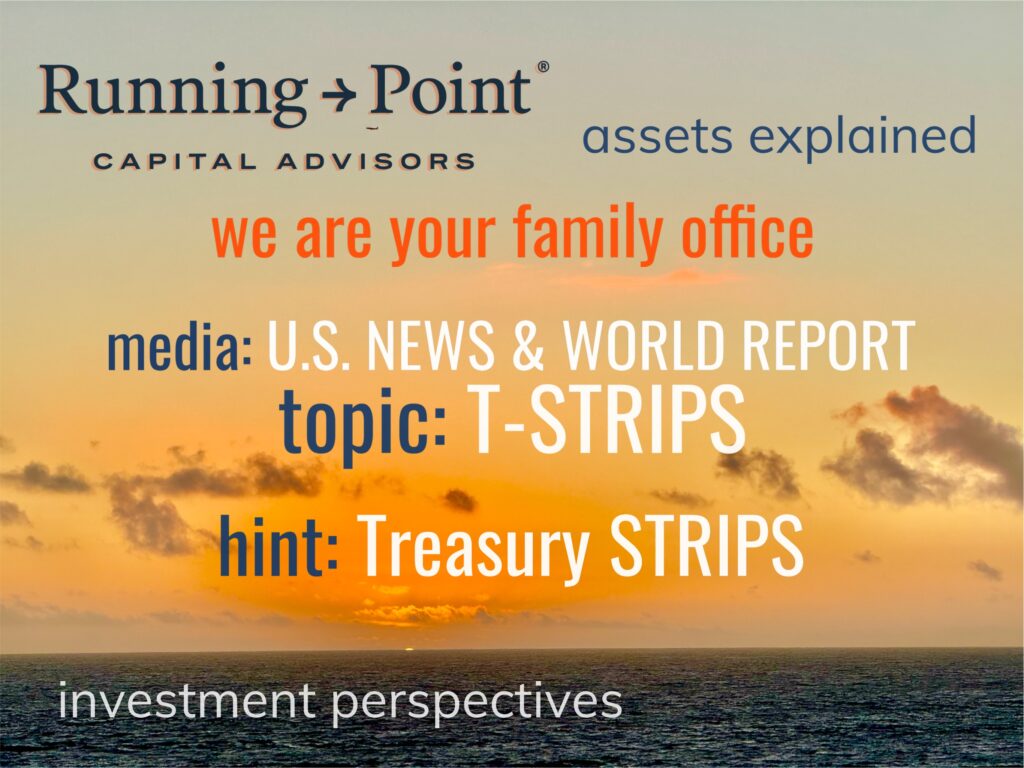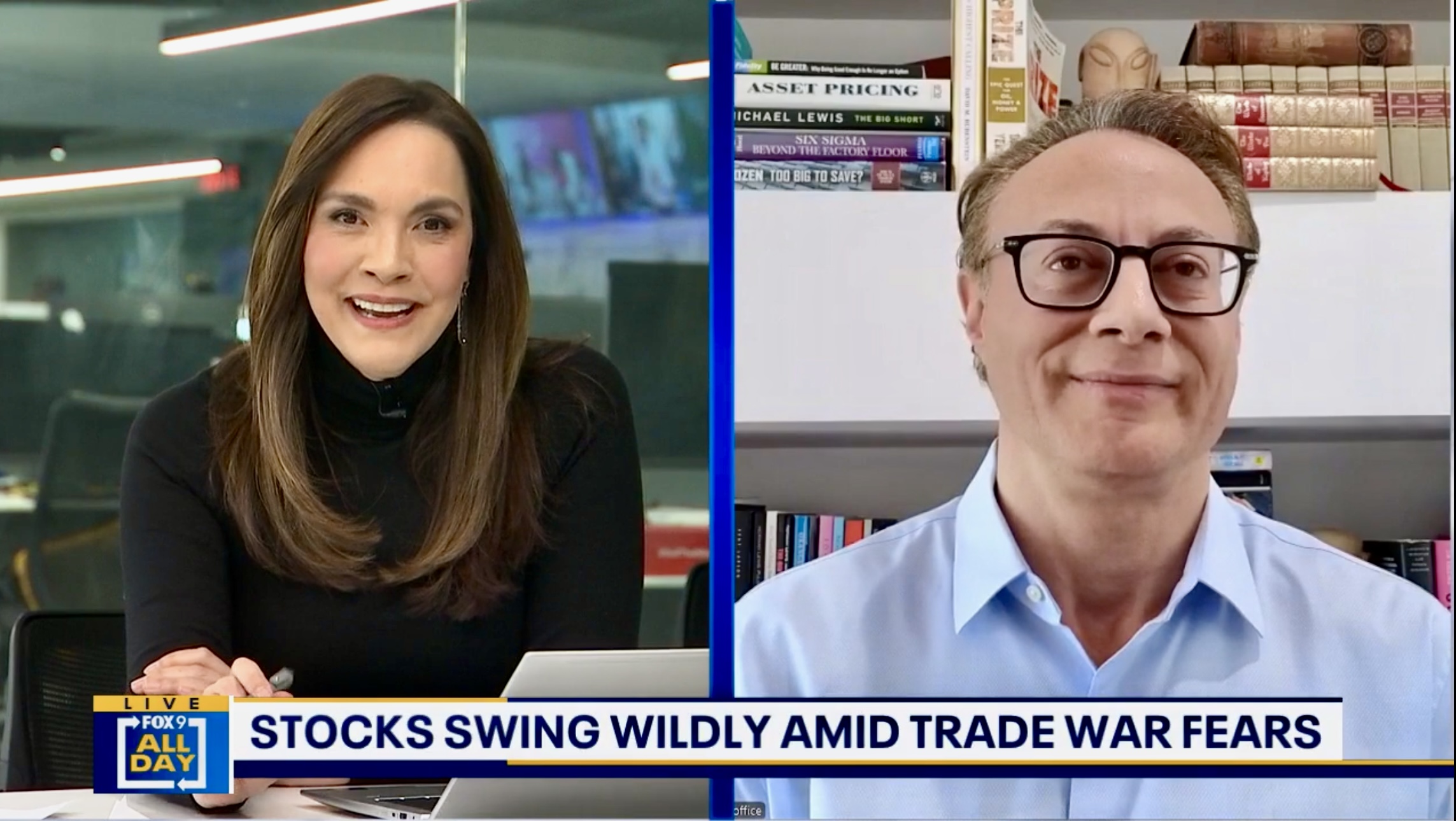What are STRIPS and how do you invest in them?
Running Point and its chief investment officer, Michael Ashley Schulman, CFA were quoted by U.S. News & World Report in an article — by reporter Tony Dong, “Treasury Strips (T-Strips): What They Are and How to Invest in Them” — regarding investing in Treasury Strips (T-Strips).
What are STRIPS?
Usually, Treasury bonds pay both interest and principal. Treasury STRIPS (Separate Trading of Registered Interest and Principal of Securities) are U.S. government fixed income investments that access the individual interest and principal cash flows of Treasury notes and bonds as separate securities. STRIPS allow you to individually purchase the detached coupon or interest payments and ultimate principal repayment of qualified Treasury bonds. The underlying bonds are literally split apart and each payment is sold off as a separate zero-coupon security.
You purchase the STRIP components at a discount to face value and are paid face value when the security matures. The discount effectively acts as the investment’s yield. STRIPS have similarities to T-Bills which are also zero-coupon and often sold at a discount, but whereas T-Bills have maturities no greater than 12 months, STRIPS may have maturities of up to 30 years.
STRIPS have greater price volatility compared to owning the intact bond since all the value is returned at maturity.
Trading and holding STRIPS
You can trade (buy/sell), hold, and redeem STRIPS only through financial institutions—brokers and dealers—that handle government securities and use the commercial book-entry system (CBES) to hold STRIPS on behalf of investors.
You cannot purchase STRIPS from TreasuryDirect or any other government agency. [Note: Generative AI responses tend to get this wrong and falsely claim that you can buy them on TresuryDirect.] The minimum face amount is $100 and their par or face value must be in multiples of $100.
Valuation and Taxes
The valuation of STRIPS is highly sensitive to changes in interest rates; when rates rise, the value of existing T Strips will decline, and vice versa. Also be aware that if held in a taxable account, you are responsible for taxes on the imputed or phantom interest earned each year even if it is not paid out; interest value must be reported in the year in which it is earned.
Quoted article excerpts are below:
“You purchase the Strips components at a discount to face value, and are paid face value when the security matures,” says Michael Ashley Schulman, partner and chief investment officer at Running Point Capital. “The discount effectively acts as the investment’s yield.”
“You can only trade, hold and redeem Strips through financial institutions – i.e., brokers and dealers – that handle government securities and use the commercial book-entry system to hold Strips on behalf of investors,” Schulman says. “However, you cannot purchase Strips from TreasuryDirect or any other government agency.”
“ETFs provide an easy way to buy diversified baskets of long-term Strips greater than 20 years,” Schulman says. “For example, the PIMCO 25+ Year Zero Coupon US Treasury Index ETF (ticker: ZROZ) and the iShares 25+ Year Treasury Strips Bond ETF (GOVZ) focus on Strips of 25+ years, while the Vanguard Extended Duration Treasury ETF (EDV) holds Strips with maturities of 20 to 30 years.”

We’re just following ancient history
Adam Ant, lyrics from his 1983 song, “Strip”
If I strip for you, will you strip for me?
Disclosure: The opinions expressed are those of Running Point Capital Advisors, LLC (Running Point) and are subject to change without notice. The opinions referenced are as of the date of publication, may be modified due to changes in the market or economic conditions, and may not necessarily come to pass. Past performance is not indicative of future results. Forward-looking statements cannot be guaranteed. Running Point is an investment adviser registered with the U.S. Securities and Exchange Commission. Registration does not imply a certain level of skill or training. More information about Running Point’s investment advisory services and fees can be found in its Form ADV Part 2, which is available upon request. RP-23-142


